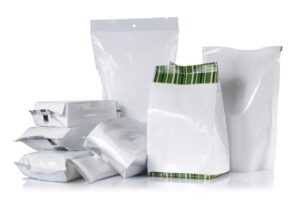
The aseptic packaging process is used for various food products and beverages, including milk, soup, tomatoes, pudding and several others. It’s also used in the pharmaceutical industry to ensure that medications aren’t polluted with harmful bacteria.
Aseptic packaging materials
Several materials are layered together to provide the level of protection required for aseptic packaging standards, including:
Polyethylene is used as a barrier on the inner and outer sides of aseptic packaging. These layers protect against moisture entering or exiting the container.
Film foil helps preserve the product by keeping light and oxygen out.
Advantages of aseptic packaging
Aseptic packaging has been growing in popularity amongst manufacturers in recent years. In fact, The Freedonia Group reported that the demand for aseptic packaging is expected to rise at a 6.8% rate annually, reaching $6.4 billion by year 2020. This growth can be attributed to the various advantages aseptic packaging provides to manufacturers.
Increased shelf life
Aseptic packaging helps increase shelf life for select products by an estimated six to 12 months without refrigeration. The increased longevity of a product’s lifespan gives manufactures more time to sell their product on retailers’ shelves, and it provides the consumer with more time to use or eat the product before it expires.
Reduced shipping and distribution costs
With the unique materials used in aseptic packaging, select products can be stored at ambient temperatures (approximately 68-77 degrees Fahrenheit). Additionally, aseptic packaging is lightweight and compact when compared to more traditional packaging types. These properties allow manufacturers to cut back on shipping costs by reducing shipping weight and eliminating the need to refrigerate products that would typically require cooler environments during distribution.
No preservatives required
Manufacturers don’t need to use preservatives with the use of aseptic packaging because the sterilization process protects against bacteria. This allows manufacturers to use real ingredients that consumers prefer.
Eco-friendly
Aseptic packaging is a sustainable method that can contribute to a manufacturer’s “Go Green” initiative. The packaging is primarily comprised of renewable resources and uses approximately 60% less plastic than other options. Aseptic packaging also requires less energy to manufacture
Maintains quality of contents
The high-tech aseptic packaging process helps preserve the overall quality of most food products. That means taste, smell, and even nutritional value will not be compromised and consumers can be confident that the product they purchase will be of high quality.
To learn more about aseptic packaging and the other packaging methods available at Eagle Flexible Packaging, connect with an expert today by filling out our sidebar form.







